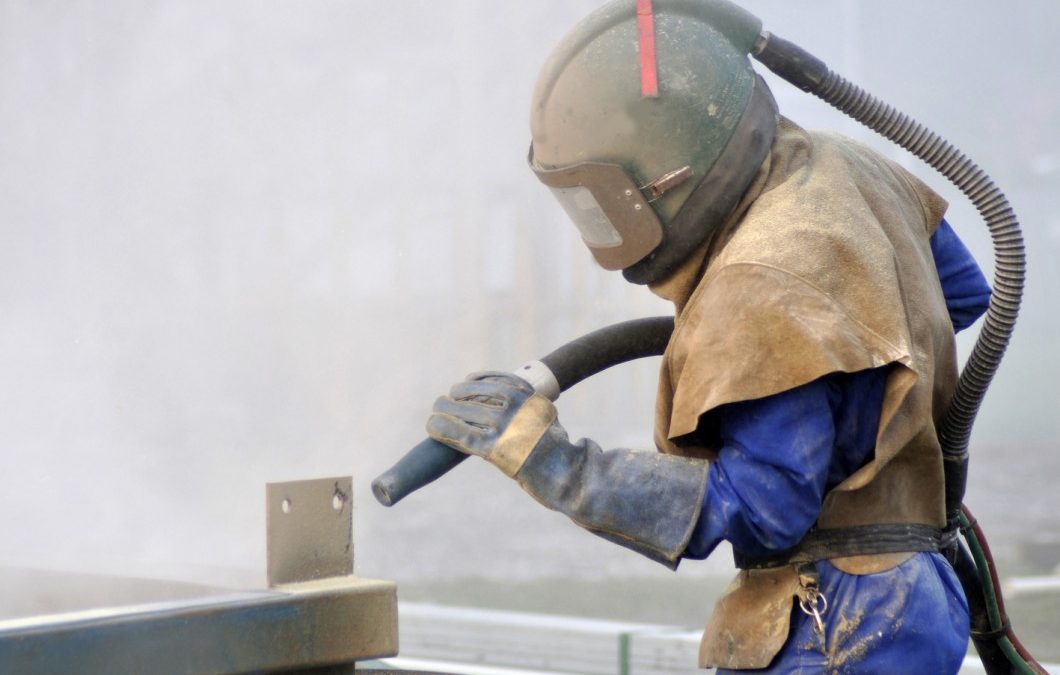Sandblasting is the process whereby fine particles are projected, or blasted, onto the surface of a component or structural material to clean and polish it. Sandblasting can be used to remove contaminants or previous coatings, or smooth or roughen the surface of materials. While the process is called ‘sand’-blasting, there are, in fact, many different varieties of particles which can be used in the sandblasting process. These particles are known as ‘blasting media’. We have put together the following guide to selecting sandblasting media to help you complete your next sandblasting project to perfection.
Aluminium Oxide Blasting Media
Aluminium oxide, when used as blasting media is useful for its sharp, angular and long-lasting properties. Aluminium oxide particles are great for fast etching and profiling and result in an anchor pattern. They are exceptionally hard, are appropriate for use in surface removal and have high recyclability.
Garnet
Garnets are a group of silicate minerals that have been used since the Bronze Age as gemstones and abrasives. It is mined out of the ground and crushed and comes in different mesh sizes. It is one of the most common forms of abrasive media and provides a relatively fast cut and good surface profile. It is recyclable and can be used up to 5 times before it gets too fine.
Glass Beads
Round, Soda-lime glass spheres are silica-free and are designed to produce a bright, satin matte-type finish. They have a low hardness rating and place minimal stress on parts, which makes them great for blasting delicate components. Glass beads have slight surface removal capacity. Like aluminium oxide blasting media, glass beads have high recyclability. They complete jobs at a medium-fast pace.
Crushed Glass
Made from recycled glass product, crushed glass is silica-free, economical and has great striping applications. Its hardness rating is low, yet it has a medium-high etching capacity which makes it great for roughing up components’ surfaces. Crushed glass has slight surface removal capacity. They are non-recyclable and complete jobs at a fast pace.
Plastic Abrasive
Soft abrasive blasting media is available in several compositions: urea, melamine and acrylic. Each offers varying hardness ratings and aggression characteristics. Plastic abrasives are particularly applicable in automotive and aerospace applications and have high recyclability. They have slight surface removal capacity and work at a medium pace.
Steel Shot and Grit
Steel shot and grit, by default, has a medium hardness rating and is useful in blasting and peening applications. Steel shot can be replaced with grit to increase its default hardness rating and for employment as surface removal blasting media. It can’t be used for surface removal normally, however. Both steel shot and grit are highly recyclable, up to 100 times, and work at a medium pace. It is useful for removal of contaminants or preparing a surface for a final finish.
Walnut Shells
Walnut shells are hard, naturally-occurring material made from crushed walnut shells. It has a moderate hardness rating and is available in a variety of sizes for blast cleaning and polishing softer surfaces. Walnut shell has medium surface removal capacity, is very recyclable and works at a fast pace. Typical applications include polishing of soft metals, jewels, fiberglass, wood, plastic and stone.
Contact Protoblast
If you work in construction, engineering or manufacturing and need industrial scale cleaning capacity, call Protoblast to place an order for one of our maxi, mega or portable sand blasting machines. Our equipment makes it easy to achieve a perfect fit between components and ensures that parts are smooth, polished and ready for action after they have been cleaned. Call us today on +61 2 4677 2320.

